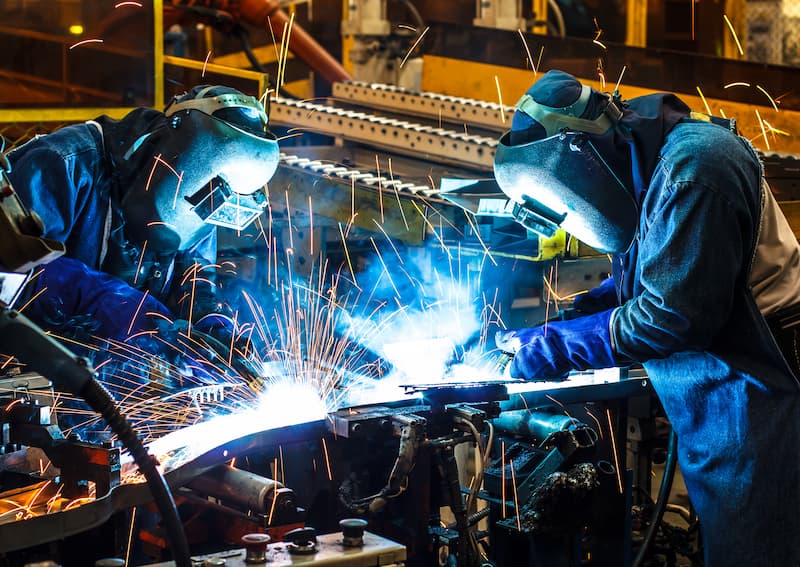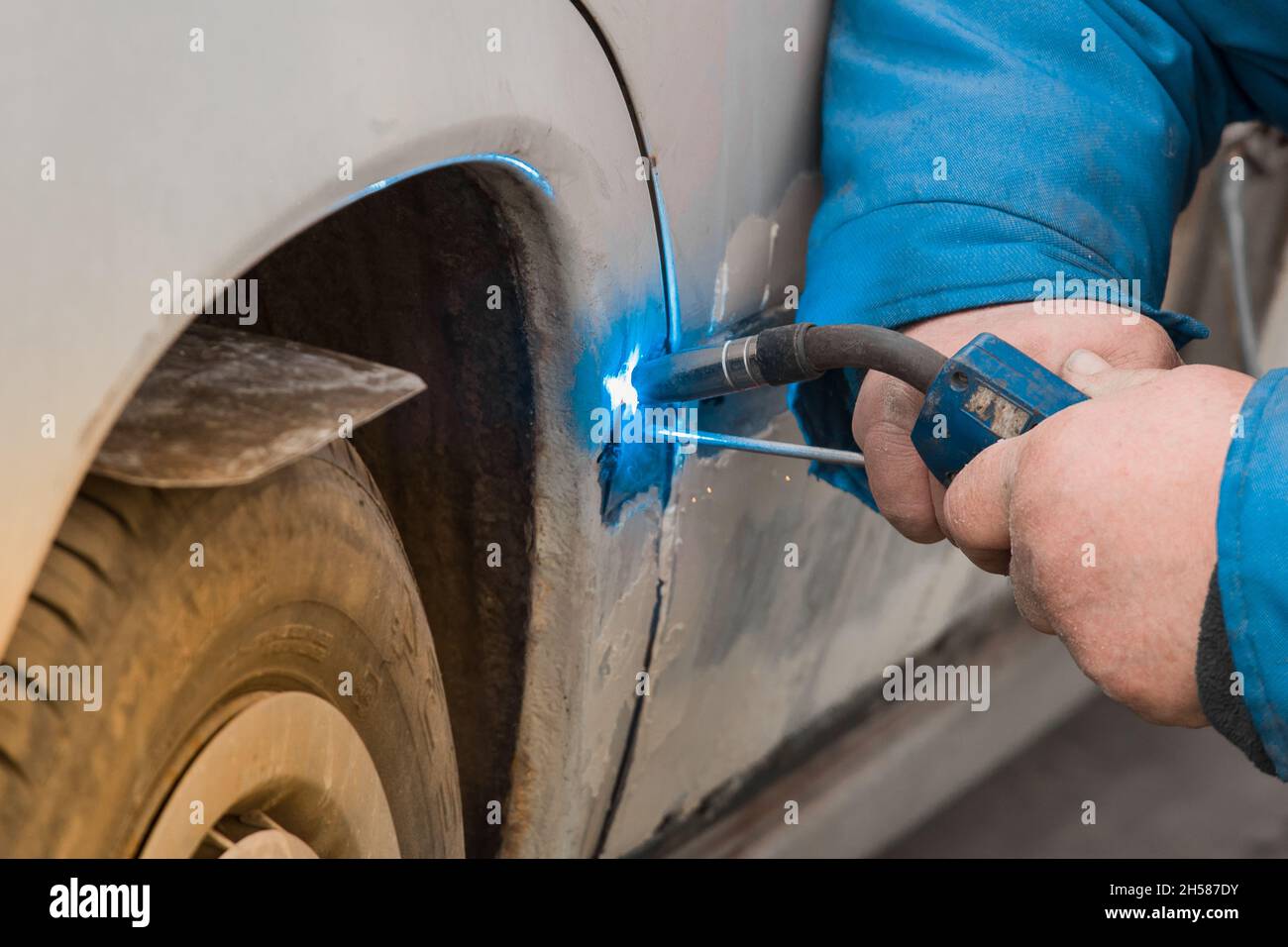Typical Welding Repair Work Issues and How to Address Them Effectively
Welding repairs frequently encounter a series of concerns that can jeopardize the stability of the end product. Usual troubles include poor penetration, porosity, and misalignment, to name a few. Each problem offers special difficulties that call for certain methods for resolution. Comprehending these issues is necessary for welders aiming to boost their skills and end results. This conversation will discover these typical welding repair work problems and effective techniques to address them.
Insufficient Penetration
Insufficient penetration happens when the weld steel fails to totally fuse with the base material, leading to weak joints and potential structural failings. This problem typically originates from insufficient warmth input, wrong electrode angle, or inappropriate welding speed. Welders may experience inadequate infiltration due to a miscalculation of the necessary specifications for a details material density or type. Additionally, contamination on the base product's surface can impede effective bonding, intensifying the problem. To deal with poor infiltration, welders ought to guarantee proper setups on their devices and maintain a clean job surface area. Routine evaluation of welds is suggested to identify any type of shortages early, enabling timely modifications and the avoidance of jeopardized architectural stability in welded settings up.
Porosity
Porosity is a common defect in welded joints that materializes as tiny gas bubbles entraped within the weld metal. This defect can compromise the honesty of the weld, bring about minimized stamina and potential failing under tension. Montana Mobile Welding and Repair Belgrade Fabrication. Porosity commonly occurs from contamination, wetness, or improper welding methods, which permit gases to run away into the liquified weld pool. To resolve porosity, welders should ensure proper surface area prep work, keep a tidy functioning atmosphere, and make use of appropriate welding parameters. Furthermore, choosing the appropriate filler material and securing gas can alleviate gas entrapment. Normal evaluation and screening of welds can help determine porosity early, ensuring prompt corrective actions are taken, thereby protecting the top quality and integrity of the bonded framework
Imbalance
Misalignment in welding can occur from numerous factors, consisting of inappropriate configuration and thermal expansion. Understanding the source is essential for reliable resolution. Several correction methods are readily available to realign parts and assure structural integrity.
Root causes of Misalignment
Welding imbalance typically stems from a selection of underlying issues that can jeopardize architectural integrity. One key reason is improper fit-up of elements prior to welding, which can bring about gaps and irregular surface areas. Variants in thermal growth during the welding process can also result in distortion, specifically if the products being signed up with have various coefficients of expansion. Furthermore, insufficient fixturing and securing might fail to hold components safely in place, causing motion throughout welding. Badly maintained equipment, including welding equipments and devices, might present disparities in the weld grain, further contributing to imbalance. Finally, driver mistake, originating from inadequate training or experience, can additionally play a significant function in creating misaligned welds.
Improvement Methods Offered
Resolving imbalance properly calls for a combination of restorative methods customized to the details problems handy. One typical technique is using components or jigs to hold elements in the right placement throughout welding, guaranteeing consistent positioning. In addition, preheating the products can help in reducing distortion and enhance fit-up. For substantial misalignment, mechanical realignment strategies, such as using hydraulic jacks or clamps, can be employed to correct the position prior to welding. Post-weld warm therapy might also be essential to soothe tensions triggered by misalignment. Cautious evaluation and modification throughout the setup stage can stop misalignment issues from becoming significant problems, promoting a smoother welding process and enhancing general architectural honesty.
Distortion
Distortion is an usual difficulty in welding that can arise from numerous variables, including unequal heating & cooling. Understanding the sources of distortion is vital for executing effective avoidance methods. Addressing this concern not just improves architectural stability however additionally boosts the total high quality of the weld.
Reasons for Distortion
When subjected to the intense warm of welding, materials often undertake changes that can cause distortion. This sensation largely arises from thermal expansion and tightening throughout the welding process. As the weld location heats up, the product broadens; upon air conditioning, it gets, which can produce interior tensions. In enhancement, uneven home heating across a work surface can exacerbate these stress and anxieties, leading to bending or flexing. The kind of product also plays a considerable duty; steels with varying thermal conductivity my sources and coefficients of growth might react in different ways, causing uncertain distortions. Inadequate joint style and inadequate fixturing can add to imbalance throughout welding, raising the likelihood of distortion. Recognizing these reasons is essential for reliable welding repair work and avoidance approaches.
Prevention Techniques
Reliable avoidance techniques for distortion during welding concentrate on controlling warmth input and ensuring proper joint layout. Maintaining a regular heat input assists to lessen thermal development and tightening, which can result in distortion. Making use of strategies such as preheating the workpiece can additionally lower the temperature gradient, promoting consistent home heating. In addition, picking ideal joint designs, such as T-joints or lap joints, can improve security and lower tension concentrations. Carrying out correct fixturing to secure the workpieces in position additionally help in maintaining placement during the welding procedure. Staggered welding sequences can distribute warm extra evenly, avoiding local distortion. By using these strategies, welders can significantly lower the chance of distortion and enhance the overall top quality of their welds.
Splitting
Splitting is a typical problem encountered in welding repair work, typically resulting from numerous aspects such as improper cooling rates, product option, or poor joint prep work. The occurrence of cracks can significantly endanger the honesty of the weld, leading to prospective failings during procedure. To address this issue, welders need to first analyze the source, making certain that materials work and properly selected for the certain application. In addition, regulating the cooling rate throughout the welding procedure is essential; quick cooling can generate stress and anxiety and lead to fracturing. Correct joint design and prep work also contribute to minimizing the danger. Carrying out these approaches can improve weld high quality and longevity, ultimately lowering the chance of cracking in completed weldments.

Incomplete Blend
A significant problem in welding repair services is insufficient blend, which takes place when the weld steel does not properly bond with the base material or previous weld passes - Welding. This defect can result in weaknesses in the joint, possibly jeopardizing the honesty of the bonded structure. Elements adding to insufficient fusion include not enough warmth input, improper Our site welding method, and contamination of the surface Your Domain Name areas being joined. To resolve this concern successfully, welders must assure proper pre-weld cleaning and surface preparation, along with adjust their welding specifications to attain adequate penetration and blend. Regular inspection during the welding procedure can also help identify incomplete combination early, allowing for prompt corrective steps to boost the overall high quality of the weld
Overheating
While welding repairs can boost structural stability, overheating presents a substantial obstacle that can cause material deterioration. Extreme heat during welding can modify the mechanical residential or commercial properties of metals, leading to minimized strength, boosted brittleness, and warping. This sensation is especially important in high-stress applications where structural reliability is paramount. Determining overheating can involve aesthetic examinations for staining or distortion, in addition to keeping track of temperature level throughout the welding procedure. To mitigate the threats connected with getting too hot, welders should employ proper techniques, such as regulating warm input, readjusting travel speed, and making use of suitable filler materials. Additionally, carrying out pre- and post-weld heat therapies can aid bring back material properties and improve the overall quality of the repair work, making sure long-term efficiency and safety and security.
Often Asked Concerns
What Are the Usual Indicators of a Welding Issue?

Just How Can I Test My Welds for High quality?
To evaluate welds for top quality, one can make use of aesthetic evaluations, ultrasonic screening, and radiographic approaches. Each strategy guarantees structural stability, determines flaws, and validates adherence to specified standards, inevitably boosting the dependability of the bonded joints.
What Safety and security Safety Measures Should I Take While Welding?
When welding, one need to prioritize safety and security by putting on proper individual safety tools, making certain correct ventilation, protecting combustible materials away, maintaining a clean work space, and being aware of environments to stop accidents and injuries.
Can I Fix a Weld Without Remodeling the Entire Joint?
Fixing a weld without remodeling the entire joint is possible, relying on the damages (Fabrication). Techniques such as grinding, including filler material, or using a welding procedure can efficiently deal with certain defects while protecting the surrounding framework
What Equipment Are Vital for Effective Welding Services?
Crucial tools for efficient welding fixings include a welding machine, wire brush, grinder, safety equipment, clamps, and filler materials. Each tool plays an important role in guaranteeing quality and safety and security during the fixing process. Porosity typically develops from contamination, wetness, or improper welding techniques, which enable gases to run away right into the liquified weld pool. Improperly maintained equipment, including welding equipments and devices, might introduce incongruities in the weld bead, additional contributing to imbalance. When subjected to the intense warmth of welding, materials commonly go through changes that can lead to distortion. Breaking is an usual problem come across in welding fixings, commonly resulting from different variables such as improper cooling rates, product selection, or poor joint prep work. A significant issue in welding repairs is incomplete combination, which happens when the weld steel does not sufficiently bond with the base material or previous weld passes.